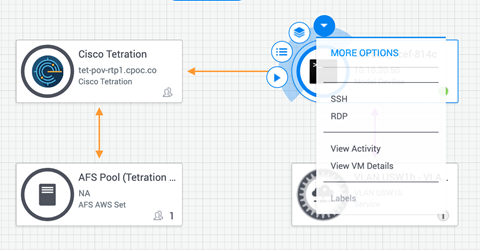The business, application and infrastructure landscape has been changing rapidly over the last few years and even faster this year. Gone are the days where a handful of monolithic applications were running in a single datacenter fully managed by a central team – simpler days. IT teams are now required to use a diverse set of environments, distributed technologies, architectures, platforms and tools to manage the critical IT resources required to keep their apps running no matter where they reside.
The job of managing all this complexity around how user experiences are delivered through applications is now beyond human scale and has big implications for IT teams and businesses including; application performance issues, time wasted in war rooms and fighting fires, underutilized infrastructure, public cloud overprovisioning, and cost overruns.
In order to confront this complexity and ensure success in this new world, organizations are focusing on IT modernization projects in terms of quality of service, cost efficiency, availability, customer experience and more time for innovation
But how can this be achieved?
IT modernization means optimizing operating models
To streamline processes and efficiently balance application performance and cost, the only choice is to automate resource management and decisions for workload placement and optimization. But deciding what workloads to run on which platform, making real-time changes as required to ensure optimal performance and cost across any environment, monitoring and troubleshooting with minimum disruption, are all tasks that take time and resources. And as complexity increases, more and more human resources are required.
This is where AIOps comes in.
To optimize an environment end-to-end, you need access to a constant stream of telemetry data from dozens, hundreds, perhaps thousands of sources. Correlating and continuously analyzing all this data with an intelligent real-time decision engine to understand how everything fits together now and in the future is the way forward. A new generation of open tooling is required to connect all the dots and offer the insights and automated actions to stay ahead of demand, stay ahead of problems, and respond to new projects with confidence.
Rethink Cloud Operations
Recognizing these challenges, Cisco unveiled a new vision for the evolution of Cisco Intersight last month, detailed in a blog by Kaustubh Das, VP/GM of Cisco’s Cloud & Compute group. Cisco Intersight is a modular cloud operations platform that brings together IT teams, tools, infrastructure, and apps and helps operations personnel visualize, optimize, and orchestrate apps and infrastructure, wherever they are. Delivering on this vision, we are happy to announce that we have released Cisco Intersight Workload Optimizer, the first in a series of powerful new Intersight solutions designed to simplify cloud operations.
Intersight Workload Optimizer (IWO) radically simplifies application resource management at scale to prevent application performance issues while reducing cost. It continuously optimizes critical resources resulting in efficient use of infrastructure whether on premises or in public clouds. It removes the guesswork from ongoing operations and planning for growth.
Turning data into action
IWO accomplishes all this through its AI-enabled decision engine that proactively matches workloads to the resources they need in real-time, using a process of data abstraction, analysis, and automation across the stack. It understands workload interdependencies, resource consumption, and costs from infrastructure to applications. It leverages telemetry data from a broad third-party ecosystem across a range of endpoints including hypervisors, compute platforms (including Cisco UCS and Cisco HyperFlex), container platforms, public clouds, applications and more, to deliver intelligent recommendations for where to place and how to size and scale resources.
As a result, Intersight Workload Optimizer establishes a common control plane for resources across hybrid cloud environments, helping IT teams to navigate and automate the dynamic resource trade-offs and relevant decisions needed to balance application performance and cost.
After the metrics from registered endpoints have been collected in a common database and normalized into an abstracted model, AI-assisted analysis is done on an ongoing basis in real-time to provide proactive recommendations to right-size resources and recommend or automatically take action as required. This enables smooth operations and ensures a good digital experience for the consumers of any application.
Optimize hybrid cloud deployments
With distributed, multicloud applications becoming a common use case, IWO takes away the pain of having to monitor and manage individual cloud platforms with cloud-specific tools. IWO can provide recommendations on workload placement as well as on types of instances including “spot” or Reserved Instances (RI’s), databases, storage, and other application components. It can also recommend and take actions such as dynamically scaling or shutting down workloads, always optimizing based on performance and cost.
Manage Kubernetes at scale
Kubernetes has become the de facto standard for container orchestration. However, for IT teams, Kubernetes has introduced an additional layer of complexity with a new environment that needs configuring and monitoring on top of existing infrastructure platforms. Intersight Workload Optimizer complements and augments existing Kubernetes capabilities for ongoing day 1 and day 2 operations with the ability to do container right-sizing, pod “move”/rescheduling, cluster scaling, and scenario planning for Kubernetes deployments.
Integration with APM tools
Intersight Workload Optimizer has enhanced integrations with 3rd party Application Performance Management (APM) solutions, including Cisco AppDynamics. The result is deeper visibility, insight and actions based on the relationship between apps and associated infrastructure, leading to even smarter resourcing decisions that are tied back to the actual application user experience. The integration provides a single source of truth for application and infrastructure teams to work together more effectively, avoiding finger pointing and late-night war rooms.
A “Hands-off” Operational Model
By applying the same set of abstraction-analysis-automation principles for any technology in IWO’s broad, third party ecosystem and for all layers of the application and resource stack, IWO is able to deliver powerful capabilities that simplify day-to-day operations for IT team members (sysadmins, v-admins, production and integration teams, cloud architects and DevOps teams etc) in an organization.
Leveraging its agentless architecture that is modularized and delivered as a Service, Intersight Workload Optimizer can rapidly expand any supported ecosystem to meet our customers’ evolving needs, however and wherever they operate. It can truly provide a closed-loop operating model based on extensive and deep visualization between applications and infrastructure, powered by AI, analytics, and automation.




















